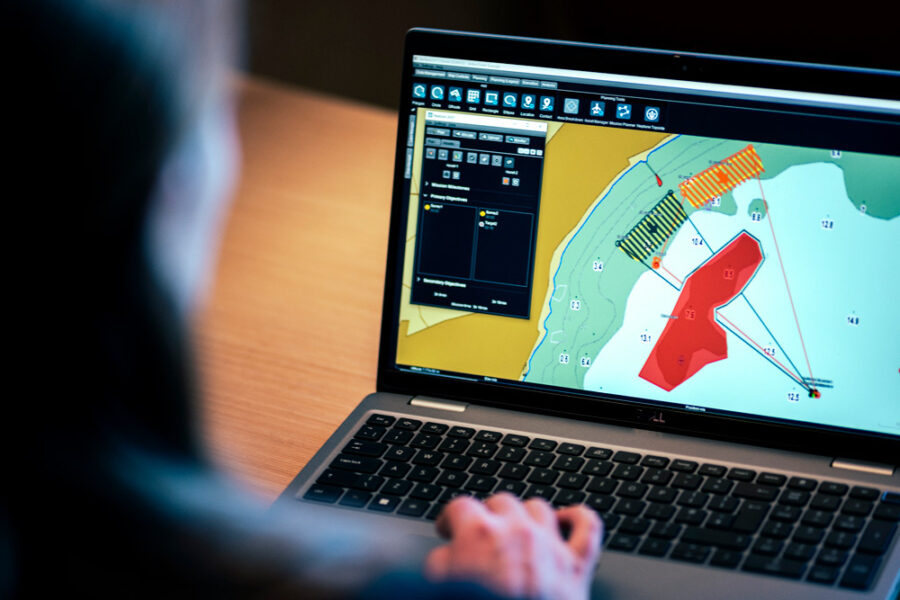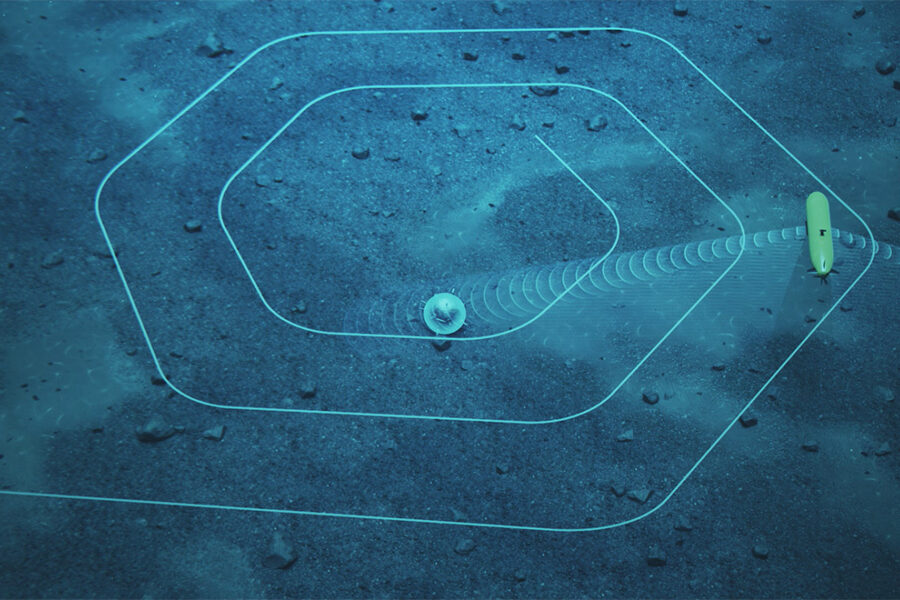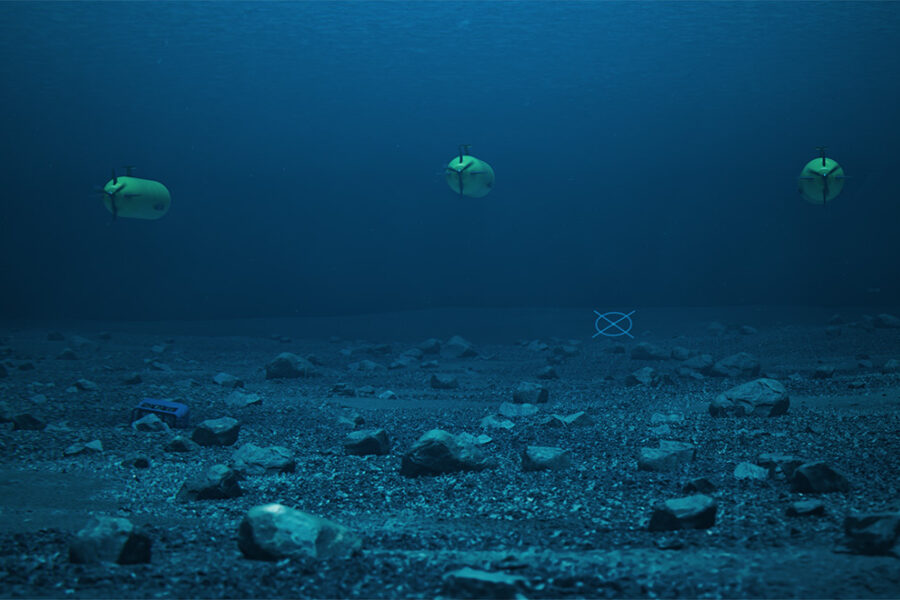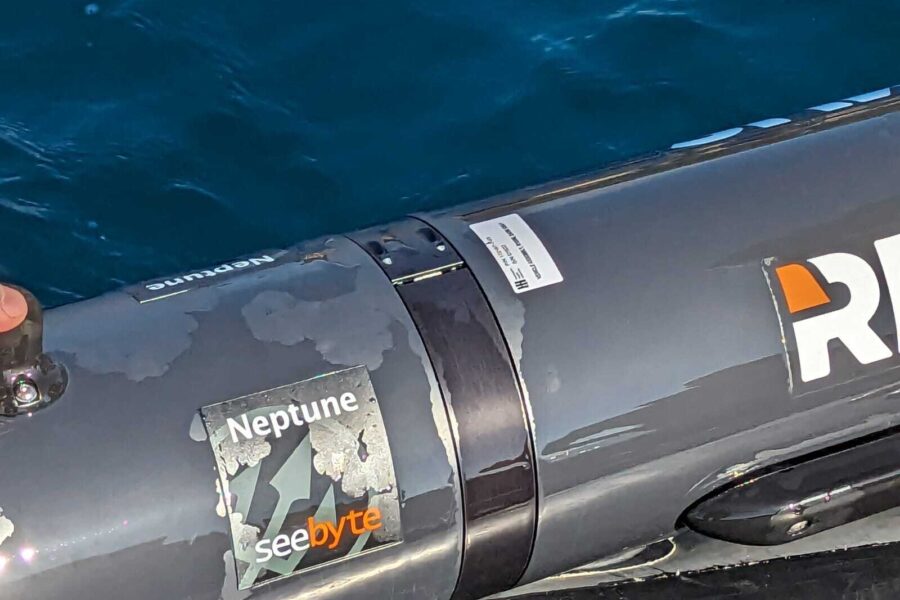Neptune
Collaborative, Mission Level Autonomy
Neptune is our intelligent autonomy system that enables collaborative operation, decentralised control, and real-time adaption. Neptune assigns goal-based plans and objectives based on the assets capabilities, ensuring each system is used to its potential.
Mission Level Autonomy
Operating as part of a collaborative squad, all systems share an understanding of the mission goal, and can contribute their specific capabilities.


In-Mission Adaption
In mission, Neptune will adapt to changes in the environment and coordinate assets to ensure mission success. By augmenting decision making, Neptune allows users to focus on the end goal.
Decentralised Control
Neptune's decentralised autonomy architecture allows multiple tasks to be run in parallel, with the vehicles automatically taking responsibility for tasks. This optimises mission execution by allowing vehicles to swap tasks, add new tasks, or manage malfunctions. Information is shared across the entire squad, as communication allows, but the decentralised autonomy ensures vehicles operate even in comms-denied environments.


Third-Party Integration
Neptune is built on top of our commercially controlled open architecture. A Software Development Kit (SDK) allows integration of third-party vehicles, sensors, autonomy behaviours or signal processing functions. World-wide government and commercial customers have already benefited from this open architecture.
Related products
-
SeeTrack
-
SeeTrack is our internationally proven, multi-domain, command and control system for single or multi-vehicle operations
-
Embedded ATR
-
Our embedded ATR runs in real-time. Neptune logs all the classified contacts, and can add dynamic reacquire tasks for the next available vehicle in the squad.
-
Neptune Simulator
-
Enables users to practice skills, rehearse, and test missions to build confidence in the system and evaluate the best way to include the autonomy in operational workflows.
Supported Platforms
HII REMUS
ATLAS SEACAT
MARTAC MANTAS
Supported Side Scan Sonar
EdgeTech Sidescan
Marine Sonic Side Scan
Klein Side Scan (MIND-Technology)
Supported Forward Look Sonar
Teledyne BlueView
Tritech Gemini
Neptune FAQ's
Minimum System Requirements
- Neptune requires SeeTrack
Embedded Processor Requirements
- Intel ATOM N450 1.66 GHz Processor
- ARM (NVIDIA Jetson family, Raspberry Pi 3 & 4)
Neptune comprises of two parts; embedded and topside. Embedded is the autonomy installed on a payload computer in the vehicle, whilst topside is the user interface installed as a plug-in to SeeTrack.
Objectives are allocated initially during the planning phase; Pre-mission Neptune presents a time optimised objective delegation based on the assets' capabilities. Users then have the option to manually refine these. During the mission, Neptune has the ability to adapt and share objectives on-the-fly to optimise the use of each asset.
Yes. Neptune offers both offline and online planning for single and multivehicle operations.
The rehearsal provides a pre-mission summary of the path that each vehicle may take to execute the required mission. During mission execution, the plan may diverge from the mission rehearsal depending on environmental conditions, vehicle faults or any other unpredictable circumstances.
Neptune can be configured so that if a vehicle fails the other vehicle(s) will execute the failed vehicles missing objectives. This may lengthen the overall mission time, but ensures all objectives are met.